Search Results
Viewing: 1-454 of 454 | All
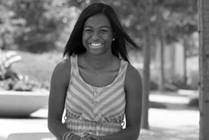
Condition
Eczema (Atopic Dermatitis)
This Helping Hand™ is about eczema in children, which is a skin problem that causes dry, itchy, rough skin rashes.
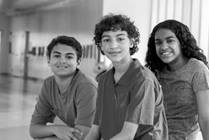
Condition
Otorrhea
Otorrhea is the medical term for ear drainage. In order for there to be drainage from the middle ear into the ear canal, there must be a connection present.
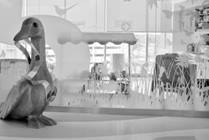
Condition
Abdominal / Duplication Cysts
Abdominal cyst is a general term used to describe a rare, congenital birth defect that causes an irregular mass of tissue to grow in a baby’s abdomen. Growths can appear anywhere along the gastrointestinal tract or reproductive organs like the ovaries. Surgery is the most common treatment for cysts.
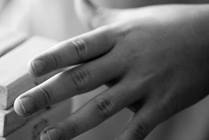
Condition
VACTERL Association
VACTERL association is a complex condition that affects up to seven areas of the body. It appears differently in everyone, but at least three areas of the body must be impacted for this diagnosis.

Condition
Pelvic Pain
Pelvic pain is considered pain in the lowest part of your abdomen. Acute pelvic pain is pain that is present for less than three months. Chronic pelvic pain is persistent and presents for six months or greater.

Condition
Autoimmune Hepatitis
Autoimmune hepatitis happens when something goes wrong with the body’s immune system. In autoimmune hepatitis, the immune system attacks normal liver cells. This causes damage that makes it hard for the liver to work properly.

Condition
Apnea
In this Helping Hand™ document, we discuss apnea, which is a pause in breathing that lasts 20 seconds or longer for full-term infants. There are many reasons why a baby may have periods of apnea including brain immaturity, neurological issues, heart disease, gastrointestinal issues and others.
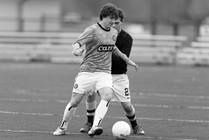
Condition
Sports Medicine: Ankle Dislocation or Subluxation
The ankle joint is made up of two lower leg bones and a foot bone. A dislocation is an injury to a joint causing the bones to no longer meet together correctly. In the ankle, this can occur when the talus no longer is in position with the tibia and fibula. A subluxation is a partial dislocation.

Condition
Anemia: Iron Deficiency
This Helping Hand™ covers iron deficiency, which is a condition where the body lacks sufficient iron to produce hemoglobin, which can lead to anemia. Symptoms include fatigue, weakness, pale skin, and shortness of breath.
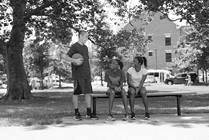
Condition
Avulsion Fractures of the Ischial Tuberosity of the Pelvis
Avulsion fractures happen when a small piece of bone is pulled away by a muscle or tendon. The ischial tuberosity, located in the buttocks, is where the hamstring tendons attach to the pelvis. These fractures often occur in teenagers.
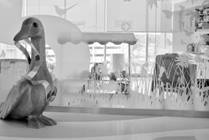
Condition
Measles
Measles, also known as rubeola, is an infection caused by a virus. It is very contagious. It can be very serious in young children, adults over 20, pregnant women and people with a weakened immune system.

Condition
Factor V Leiden
Factor V (factor five) is a protein involved in the blood clotting process. Children born with Factor V Leiden produce a mutated form of Factor V that does not respond well to activated Protein C.
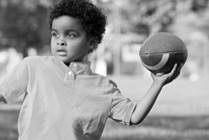
Condition
Vitamin D Deficiency
This Helping Hand™ covers vitamin D deficiency. Vitamin D keeps our bodies healthy and builds strong bones. It does this by helping the body absorb calcium and phosphorous from foods and supplements. If your child has a vitamin D deficiency it means they do not have enough vitamin D in their body.
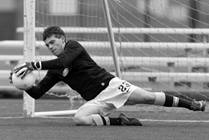
Condition
Chronic Ankle Instability
Chronic ankle instability happens when your ankle keeps giving way, especially after many sprains. This makes it hard to walk or play sports without your ankle feeling weak or wobbly. It can happen even when you’re just standing still.

Condition
Hypoplastic Left Heart Syndrome
Hypoplastic left heart syndrome (HLHS) is a congenital heart defect where most of the structures on the left side of the heart are small and underdeveloped. The Hybrid approach, developed by surgeons at Nationwide Children's Hospital, is an alternative to Norwood open heart surgery for HLHS.

Condition
Uterine Didelphys
Uterine didelphys is a disorder present before birth in which a female develops two uteruses instead of one. Treatment could be needed if symptoms occur such as unusual pressure or cramping pain before or during a menstrual period or an abnormally high amount of bleeding during a menstrual period.

Condition
Noisy Breathing (Stertor, Stridor or Wheezing)
Noisy breathing is common, especially in children. and can be a sign of many different conditions. Noisy breathing is typically caused by a partial blockage or narrowing at some point in the airways. Types of noisy breathing include low-pitched, stridor and wheezing.
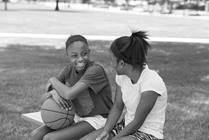
Condition
Menstrual Period Disorders
Menstrual periods can be very different for different people. What is “normal” for some may not be for others. Menstrual period disorders can mean your periods are not the same length or time each month or can mean your blood flow is heavier than usual.

Condition
Amenorrhea
Amenorrhea is when a girl or woman does not have her period. Primary amenorrhea is when periods have not started by age 16. Hormone levels and anatomical problems can cause amenorrhea.

Condition
Tongue Tie
Tongue tie, or ankyloglossia, is a condition in which your child’s tongue is tethered to the floor of the mouth by a band (lingual frenulum). While up to 10 percent of children can have some degree of tongue tie, not all children with tongue tie require intervention.
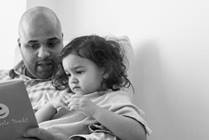
Condition
Celiac Disease
Celiac disease is a chronic condition that results in damage to the lining of the small intestines. Symptoms are triggered by the ingestion of products that contain wheat, barley or rye proteins, collectively known as gluten.
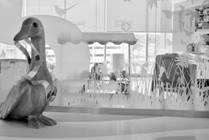
Condition
Congenital High Airway Obstruction Syndrome (CHAOS)
Congenital high airway obstruction syndrome, or CHAOS, is a very rare condition where the fetal airway is fully or partly blocked. CHAOS is usually found during a routine prenatal ultrasound. In some cases, fetal surgery may be done to remove the blockage. Sometimes CHAOS resolves on its own.
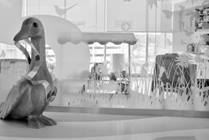
Condition
Dandy-Walker Syndrome
Dandy-Walker Syndrome (DWS) is a congenital condition where the cerebellum does not develop normally. The cerebellum is an area at the back of the brain that controls movement and balance. With DWS, parts of the cerebellum may never develop, may be very small, or may become filled with fluid.
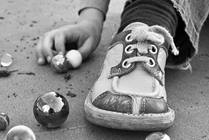
Condition
Conjunctivitis (Pink Eye)
Conjunctivitis, or pink eye, is an inflammation of the conjunctiva. The conjunctiva is a clear membrane that covers the white part of the eye and the inner part of the eyelids.

Condition
Physical Abuse
Physical abuse is any act that results in physical injury to a child or adolescent, even if the injury was unintentional.

Condition
Impaired Spleen Function
The spleen is an organ that helps prevent and control some infections. Asplenia is when you don’t have a spleen.

Condition
Diabetes: MODY
MODY is the name given to a collection of different types of inherited forms of diabetes that usually develop in adolescence or early adulthood. MODY stands for “Maturity-onset diabetes of the young” and was given that name because it acted like an adult type of diabetes but was found in young people.
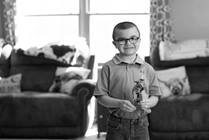
Condition
Duchenne Muscular Dystrophy (DMD)
Duchenne muscular dystrophy (DMD) is a rare condition defined by worsening muscle weakness and damage. It is the most common inherited neuromuscular disorder that affects all races and ethnicities. DMD only affects males and children with DMD may lose the ability to walk as early as 7 years of age.
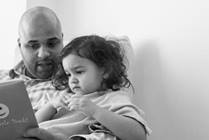
Condition
Food Allergy and Parenting
This Helping Hand™ offers advice on parenting a child with food allergies. You have watched your child’s food and surroundings from an early age. You have also worked hard to speak to others, such as family, friends, and your child’s school, about keeping them safe from their allergen(s).

Condition
Endometriosis
Endometriosis is an inflammatory and estrogen-dependent condition in which the menstrual tissue is found outside the uterus, within the pelvis. Pain due to endometriosis is different from normal menstrual pain. Girls who have a family history of endometriosis have an increased chance of developing it.
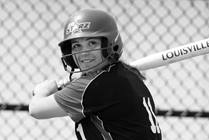
Condition
Sports Medicine: Herniated Disc
A herniated disc is a condition that affects the spine. A disc has a tough outside shell and jelly-like center. A herniated disc occurs when the jelly-like contents of the disc leak out.
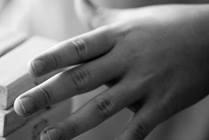
Condition
Cloacal Malformation
Cloacal malformation, sometimes called persistent cloaca, is found in female children where the rectum, vagina and urethra are fused together, creating a single common channel. In developing fetuses, these openings are joined in a sac known as the cloaca. At birth, these openings are normally separate.
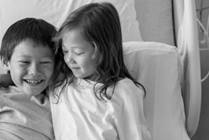
Condition
Atrioventricular Septal Defect (AVSD)
Atrioventricular septal defect (AVSD), also commonly known as endocardial cushion defect or atrioventricular canal defect (AVCD), is a heart condition where there are holes between the heart’s upper and lower chambers, and the valves controlling blood flow may not form correctly.

Condition
Pilonidal Disease
This Helping Hand™ is about pilonidal disease, which is a common skin condition that happens between the buttocks.

Condition
Nasal Turbinate Hypertrophy
Turbinate hypertrophy, inferior turbinate hypertrophy, and nasal turbinate hypertrophy are all descriptions of a similar condition where the tissue on the lateral (outside) walls of the nose are too large, causing nasal obstruction.

Condition
Migraines
To be diagnosed with migraines, a child needs to have at least five headaches that meet certain criteria: pain that is moderate to severe, pain that is one-sided (unilateral) or on both sides of the head (bilateral), sensitivity to light and sound, and nausea that may or may not lead to vomiting.

Condition
Recurrent Respiratory Papillomatosis (RRP)
RRP is caused by the Human Papilloma Virus (HPV), which is a highly prevalent virus.

Condition
Swallowing Disorders
A swallowing disorder can result in aspiration or food “going down the wrong pipe.” Aspiration can place a child at a higher risk for respiratory/pulmonary issues.

Condition
High-Grade Gliomas
High-grade gliomas are fast-growing cancers that form in the brain or spinal cord. Surgery, radiation, and targeted therapies can help. High-grade gliomas are more aggressive and can grow quickly. They are the second most common type of malignant brain tumor in children.

Condition
Bladder Exstrophy
Children born with bladder exstrophy need lifelong management. The urology team at Nationwide Children's is here to help your family with a care plan.
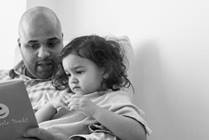
Condition
Mayer-Rokitansky-Küster-Hauser Syndrome
Mayer-Rokitansky-Küster-Hauser Syndrome (MRKH) is a rare condition that affects girls and women. It means they are born without a fully developed uterus or vagina.

Condition
Allergy to Stinging Insects
In this Helping Hand™ document, we discuss local and systemic reactions to stinging insects. The most common stinging insects found in the Ohio area are honeybees, wasps, yellow jackets and hornets. Doctors often prescribe an automatic injector device such as an EpiPen® to treat severe reactions.
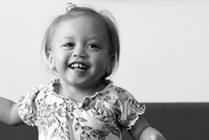
Condition
Hemangioma and Vascular Malformations
The treatment of a hemangioma is usually observation. Some hemangiomas can cause problems if they bleed or press on important nearby structures, such as the eye or the upper airway. Venous malformations, lymphatic malformations and arteriovenous malformations require a multidisciplinary approach.
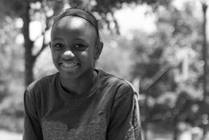
Condition
Multicystic Dysplastic Kidney
Multicystic dysplastic kidney is a common condition that occurs when one kidney does not develop correctly as it is forming in the womb. It is possible to end up with a non-functioning kidney full of cysts and scar tissue. The remaining kidney is usually able to take over all kidney function.
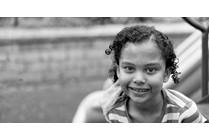
Condition
Tinea Pedis
This Helping Hand™ is about athlete's foot (tinea pedis) a common foot infection caused by a fungus.
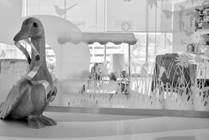
Condition
Breast Asymmetry
Breast asymmetry in teenage females is common. In certain situations, the asymmetry may be significant and may lead to decreased body image, and difficulty finding clothes that fit. Treatment may include surgery. The type of surgery varies based on patient wishes and surgeon assessment.

Condition
Macromastia
Macromastia refers to enlarged breasts in females. This condition may cause back and neck pain, as well as rashes and limitations with daily activities. In those situations, breast reduction surgery may be beneficial.

Condition
Batten Disease
Batten Disease, also known as Spielmeyer-Vogt-Sjogren-Batten disease, is the most common form of a group of disorders called neuronal ceroid lipofuscinoses (or NCLs). Although Batten disease is usually regarded as the juvenile form of NCL, it has become the term which encompasses all forms of NCL.
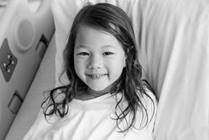
Condition
Double-Inlet Left Ventricle
Double-inlet left ventricle (DILV) is a heart defect where both upper chambers send blood to one lower chamber, causing mixed blood flow to the body and lungs. Most babies with DILV will need many heart surgeries over their lifetime. Most surgeries are successful, but your child will need cardiology care for life.
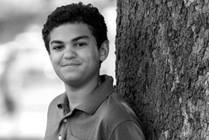
Condition
Subglottic Stenosis
Subglottic stenosis is a narrowing of the airway in the part of the voice box below the vocal cords (glottis). There are two kinds of subglottic stenosis: congenital subglottic stenosis and acquired subglottic stenosis.

Condition
Bulimia Nervosa
Bulimia nervosa is a type of eating disorder in which a person regularly eats excessive amounts of food and then attempts to eliminate the consequences of overeating by vomiting, taking laxatives or diuretics, fasting, or exercising excessively.

Condition
Hymen Variants
Hymen is a thin piece of tissue located at the opening of the vagina. The hymen needs to be open to allow menstrual blood and normal secretions to exit the vagina. Hymens come in different shapes including imperforate hymen, microperforate hymen, cribiform hymen and septate hymen.
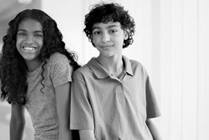
Condition
Attention Deficit Hyperactivity Disorder - ADHD
Attention Deficit Hyperactivity Disorder (ADHD) is a common behavioral disorder. It affects about ten percent of school-age children. Boys are more likely than girls to be diagnosed with it. Young people with ADHD have an impulsive nature that is difficult for them to control.

Condition
Ovarian Neoplasm
This Helping Hand™ highlights ovarian neoplasm, which is an abnormal growth of cells in the ovary. It can be benign or malignant. Symptoms include abdominal bloating, weight loss, and fatigue. Treatment usually involves surgery and chemotherapy.
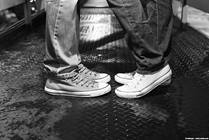
Condition
Human Papillomavirus (HPV)
Human papillomavirus (HPV) is the most common sexually transmitted infection (STI). Anyone who is sexually active is at risk of getting HPV.

Condition
Chronic Intestinal Pseudo-Obstruction
In CIP the intestines react as if there is a true obstruction or blockage. When tests are performed, no physical evidence of blockage is found.
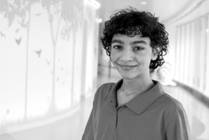
Condition
Neurofibromatosis (NF1, NF2 & SWN)
Neurofibromatosis includes three distinct health conditions. These genetic disorders case tumors in the nervous system, including the brain, spinal cord and nerves. While most tumors are non-aggressive, they may still require treatment.

Condition
Allergic Rhinitis
Allergic rhinitis is a common condition caused by an abnormal reaction of the body’s immune system to various allergens. In this condition, the nasal lining can become very inflamed and swollen from the over-response of the body. Common allergens include dust, grass, pollen, mold, trees and dander.

Condition
Psychogenic Non-Epileptic Events
This Helping Hand™ reviews what psychogenic non-epileptic events (PNEE) are, as well as signs, diagnosis, and treatment options.

Condition
Tympanic Membrane Perforation
Tympanic membrane perforation can be suspected with a history of ear trauma, ear tubes, frequent ear drainage or hearing loss.

Condition
Knock Knees (Genu Valgum)
Genu valgum, also known as knock knees, is a common lower leg abnormality that is usually seen in the toddler, preschool and early school-age children. In genu valgum, the lower extremities turn inward, causing the appearance of the knees to be touching while the ankles remain apart.

Condition
Hydronephrosis
Hydronephrosis is a radiology term for swelling or fluid in the kidney. Hydronephrosis can be a sign of other kidney or bladder problems or developmental issues

Condition
Psoriasis
Psoriasis (sore-EYE-uh-sis) is a common skin problem that looks like pink or red areas of skin topped with white or silvery scaly patches.

Condition
Turner Syndrome
Turner Syndrome is a rare genetic disorder that affects females. It is caused by a partial or complete loss of an X chromosome.

Condition
Bipolar Disorder
Bipolar disorder, formerly known as manic-depression, is a chronic mental illness that causes extreme mood swings from high to low.

Condition
Enuresis (Bedwetting)
Enuresis is the medical term for wetting the bed. It means a child urinates without meaning to. Treatment usually means helping a child to form habits that will allow him to control his need to urinate.
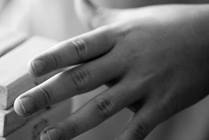
Condition
Allergy to Dust Mites
This Helping Hand™ covers allergy to dust mites. When a person who is sensitive to the dust mite breathes in these particles, they can cause sneezing, coughing, runny nose, congestion and itchy, watery eyes.

Condition
Prepubertal Vaginal Bleeding
There are several different reasons why a pediatric patient may experience vaginal bleeding. It is important to notify your health care provider if you notice your child is having vaginal bleeding.

Condition
Syphilis
Syphilis (SIF-i-lis) is a sexually transmitted infection (STI). Anyone who is sexually active has a chance of getting syphilis.

Condition
Vaginal Atresia
Vaginal atresia is a condition a child is born with. The vagina might not be formed completely, meaning it is closed or absent. Treatment includes dilators or surgery.
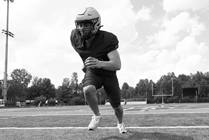
Condition
Lateral Collateral Ligament Sprain
The lateral collateral ligament (LCL) is one of the 4 major ligaments of the knee. An injury to the LCL alone is not common and often occurs with knee injuries.

Condition
Congenital Hypothyroidism
This Helping Hand™ is about congenital hypothyroidism, which is when a baby is born without enough thyroid hormone. Learn more about symptoms and treatment for congenital hypothyroidism here.

Condition
Bicuspid Aortic Valve
Bicuspid aortic valve disease (BAV) is an irregularity in the heart where there are only two leaflets on a valve, instead of the normal three.

Condition
D-Transposition of the Great Vessels
D-Transposition of the great vessels (d-TGA) is a congenital heart defect where the aorta and pulmonary artery are switched from their normal positions. Shortly after birth, babies with d-TGA are blue because not enough oxygen is getting to the body.

Condition
Meniscus Tears
Meniscus tears are common injuries. The meniscus is the rubbery cartilage disc between the tibia and femur. It acts as a shock absorber in the joint. The meniscus helps provide stability in the knee.

Condition
Snapping Hip Syndrome
Snapping hip syndrome is a condition in which you may sense something catching or hear a popping sound or click in your hip when your hip joint moves. If you put your hand over the hip area, you might feel or even see the snap happen when walking, running, bending or getting up from a sitting position.
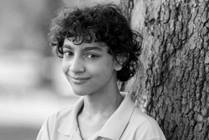
Condition
Auditory Processing Disorder (APD)
Auditory Processing Disorder (APD), also referred to as Central Auditory Processing Disorder (CAPD), is a disorder of the auditory (hearing) system that causes a disruption in the way that an individual’s brain understands what they are hearing. It is not a form of hearing loss.
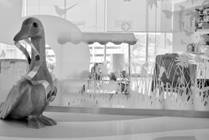
Condition
Lower Urinary Tract Outlet Obstruction (LUTO)
Lower urinary tract outlet obstruction is when pee is partly or completely blocked from leaving the body at the lower urinary tract. LUTO occurs in about 1 in every 5,000 pregnancies. It is more common in males.

Condition
Lordosis
Lordosis is the natural curve of the lower back (lumbar) area of the spine. There are five primary types of lordosis: postural lordosis, congenital/traumatic lordosis, post-surgical laminectomy hyperlordosis, neuromuscular lordosis and lordosis secondary to hip flexion contracture.

Condition
Spleen Injury
This Helping Hand™ covers spleen injuries. Due to where the spleen is in the body and its size, it can get injured easily. Learn what to expect if your child has a spleen injury.
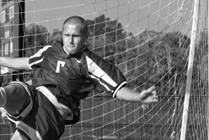
Condition
Sports Medicine: Adductor Muscle Strain
Adductors are a group of muscles that go from the pelvic bone down to the inner thigh and knee. An adductor strain is an injury to one of these muscles.
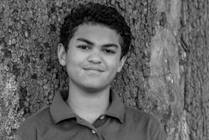
Condition
Vocal Fold Nodules
Vocal fold or vocal cord nodules are small, non-cancerous growths on your child’s vocal cords. They are often caused by voice abuse. Over time, your child’s repeated misuse of the vocal folds results in soft, swollen spots on each vocal fold.
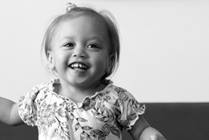
Condition
Feeding Disorders
Feeding disorders are characterized by extreme food selectivity by type, texture, brand, shape or color.

Condition
High Cholesterol
Cholesterol is a fatty yellow substance. It is made by your liver from the fats, carbohydrates and proteins in the food you eat. Learn more from Nationwide Children's.

Condition
Enlarged Tonsils
The function of the tonsils is to help identify and fight infections caused by viruses or bacteria. They can cause problems if they are enlarged or become infected.

Condition
Labial Hypertrophy
Larger-appearing labia minora, known as labial hypertrophy, may be completely normal. Labia vary in appearance with a wide range of normal regarding the size, shape and color. The majority of patients who have concerns about labial hypertrophy have normal labia.

Condition
Obstructed Mullerian Duct Anomalies
Obstructed mullerian duct anomalies are defects in the development of the reproductive system that are present in a female baby before birth.

Condition
Vaginal Anomalies
Vaginal anomalies are disorders that involve abnormally formed or absent vaginas. These include: vaginal agenesis, imperforate hymen, septate hymen, transverse vaginal septum and transverse vaginal septum. These occur in about 5% of females with an anorectal malformation/imperforate anus.
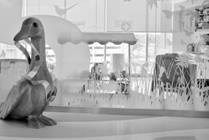
Condition
Hydroureter
Hydroureter is when the ureter gets bigger than normal due to a backup of urine.
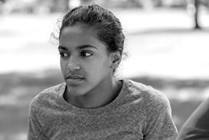
Condition
Hemophilia Carrier
A hemophilia carrier is a female who has the gene that causes hemophilia A or hemophilia B deficiency.
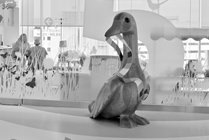
Condition
Sialorrhea (Drooling)
Sialorrhea, also known as hypersalivation or drooling, means excessive saliva flow. Anterior sialorrhea is when patients have forward spillage of saliva from their mouths onto their faces and clothes. Posterior sialorrhea is when patients have spillage of saliva from their mouths down their airways.

Condition
Bone Marrow: Transplant Chronic Graft-Versus-Host-Disease
This Helping Hand™ explains how after someone has a bone marrow transplant, the donated bone marrow or stem cells can attack healthy tissue in a patient’s body.
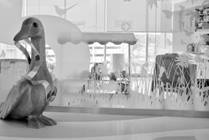
Condition
Hand, Foot and Mouth Disease
Hand, foot and mouth Disease (HFMD) is a common illness caused by a virus. Early symptoms of HFMD are much like a common cold. After a day or two, you might see small painful sores (ulcers) on the throat and tonsils and a rash of very small blisters or red spots on the hands, feet and diaper area.
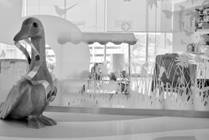
Condition
Meningitis
Meningitis is an infection of the meninges. These are the membranes that cover the brain and spinal cord.
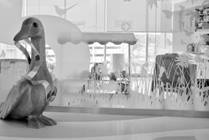
Condition
Cloacal Exstrophy
Cloacal exstrophy, also known as OEIS syndrome, is a rare congenital birth defect that occurs when the lower abdominal organs do not form properly during fetal development. Babies with this condition are born with organs outside the body, such as the bladder, small and large intestine.

Condition
Wilms' Tumor
This Helping Hand™ covers Wilms' tumor, a cancerous tumor of the kidney. It is thought to be caused by abnormal genes. The tumor may occur at any age, but it is most common in children 1 to 5 years of age.
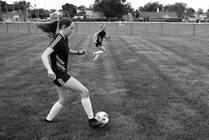
Condition
Elbow Dislocation
The elbow joint is made up of three bones. An elbow dislocation is an injury to the elbow joint that causes the humerus and ulna to be moved from their normal spot, so they no longer fit together.
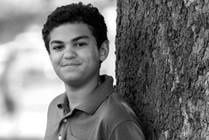
Condition
Pulmonary Arterial Hypertension (PAH)
Pulmonary hypertension is a rare lung disease in which the blood pressure in the pulmonary arteries are high.

Condition
Sports Medicine: High Ankle Sprain
A high ankle sprain is the stretching and/or tearing of the ligaments that connect the shin bones just above the ankle. High ankle sprains are less common than other ankle sprains and typically more severe.

Condition
Soft Tissue Sarcomas
Soft tissue sarcomas start as painless lumps or swellings, but they are cancerous tumors. They occur most commonly in the arms, legs, chest and abdomen in children.

Condition
Anterior Cruciate Ligament (ACL) Tear
An anterior cruciate ligament (ACL) tear is a sprain of one of the four major ligaments of the knee. The ACL is a rope-like structure that helps maintain the normal position of the femur (thigh bone) and the tibia (leg bone).

Condition
Hip Pointer (Iliac Crest Contusion)
A hip pointer is a bruise to the bone on the side of the hip called the iliac crest. It is usually from a direct hit to the hip. Bruises cause bleeding from small blood vessels that split, allowing blood to leak into the muscles, tendons, or other soft tissues.
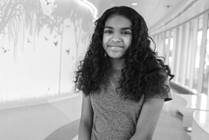
Condition
Hip Dysplasia
Hip dysplasia, also known as developmental dysplasia of the hip (DDH), is an issue that is present at birth. In a child with DDH, the hip socket is shallow. As a result, the head of the femur may slip in and out. It may dislocate. This means it moves partly or completely out of the hip socket.

Condition
Trichomonas
Trichomonas is a sexually transmitted infection (STI). Anyone who is sexually active has a chance of getting trichomonas.
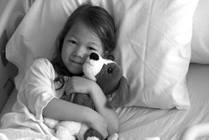
Condition
22q Deletion Syndrome
22q11.2 deletion syndrome, also known as DiGeorge Syndrome, is a condition where there is a small amount of genetic material missing (a microdeletion) on the long arm (the q arm) of chromosome 22. 22q has the potential to impact every system in the body and can lead to a range of health issues.

Condition
Mononucleosis (Infectious)
Infectious mononucleosis, also known as “mono” or "the kissing disease," is an illness usually caused by the Epstein-Barr virus (EBV). Some cases are caused by a virus called cytomegalovirus (CMV). The virus is contagious and spreads when someone comes in contact with an infected person’s saliva.

Condition
Achalasia
Achalasia happens when there are problems with the nerve cells in the muscles of the esophagus.
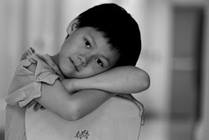
Condition
Failure to Thrive
Failure to thrive (FTT) is a term that is traditionally used for children who have failed to develop and grow normally. FTT occurs when a child is either not receiving enough calories or is unable to properly use the calories that are given, resulting in failure to grow or gain weight.
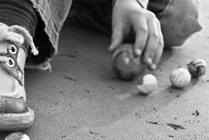
Condition
Oppositional Defiant Disorder
Oppositional defiant disorder is a type of disruptive behavior disorder in which children frequently defy authority with hostility, leading to serious disturbances in their daily life.

Condition
Spontaneous Pneumothorax
This Helping Hand™ covers a spontaneous pneumothorax, which usually happens when a weak part of the lung is leaking air. These areas are like blisters on the lungs, called blebs. They can burst and leak air into the pleural space.

Condition
Tenosynovial Giant Cell Tumors
There are three kinds of tenosynovial giant cell tumors (TGCTs). One type grows in the tissue that lines the joints (synovium). The second kind grows in the area that cushions the joints and tendons (bursa). The third type grows in the lining around the tendons (tendon sheath).

Condition
Allergy to Mold
This Helping Hand™ covers mold, which is a fungus that can be found almost anywhere, both indoors and outside. Only a few types of mold cause an allergic reaction. Mold seeds (or spores) get into the air and are then breathed in.

Condition
Ranula
A ranula is a fluid collection or cyst that forms in the mouth under the tongue. It is filled with saliva that has leaked out of a damaged salivary gland. If a ranula stays in the mouth underneath the tongue it is called a simple ranula. If it grows down into the neck it is called a plunging ranula.

Condition
Precocious (Early) Puberty in Children
This Helping Hand™ is about early puberty in children. Sometimes, puberty can start earlier and before signs show.

Condition
Hypothyroidism
This Helping Hand™ explains the cause, types, symptoms, diagnosis, and treatment for hypothyroidism.
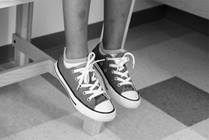
Condition
Non-Ossifying Fibromas
Non-ossifying fibromas (NOFs) are made of fibrous or “scar” tissue in the bone. They are not cancerous and they do not spread to other parts of the body or bone.
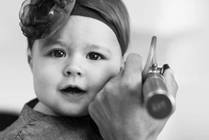
Condition
Paradoxical Vocal Cord Dysfunction (PVCD)
With Paradoxical Vocal Cord Dysfunction (PVCD), the vocal cords close together, or constrict, when a person inhales, leaving only a small opening for air to flow into the windpipe.

Condition
Gastroparesis
Gastroparesis is a condition that causes food and liquid to stay in the stomach for a long time.

Condition
Ménière's Disease
Ménière's disease is a balance disorder caused by an abnormality found in a section of the inner ear called the labyrinth.

Condition
Limb Length Discrepancy (LLD)
A limb length discrepancy (LLD) is when one arm or leg is longer than the other arm or leg. Leg length discrepancies are very common. There are two main causes of leg length discrepancy: a condition that caused one leg to grow slower or something like an injury affected the growth of the bone.

Condition
Gonadal Dysgenesis
Gonadal dysgenesis, also known as 46XY gonadal dysgenesis and Swyer syndrome, is a condition in which the ovaries or testes (gonads) did not form the right way during pregnancy. Treatment may include surgery or hormone therapy.

Condition
Pelvic Inflammatory Disease
Pelvic inflammatory disease, also known as PID, is an infection in the uterus, the fallopian tubes or the ovaries. PID most commonly occurs in sexually active females, but may also occur in females who have never been sexually active.

Condition
Primary Ovarian Insufficiency (POI)
Primary ovarian insufficiency (POI) is a condition in which a woman’s ovaries do not make enough follicles or the follicles do not function properly. Because of this, there are not enough hormones produced and women stop having menses (their “period”) before the age of 40.
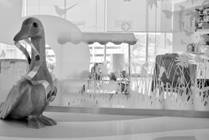
Condition
Nursemaid's Elbow
This Helping Hand™ explains what Nursemaid's elbow is and talks about how to prevent it.

Condition
Posterior Urethral Valves
Posterior urethral valves (PUV) is when there are abnormal tissue flaps in the tube that lets urine flow from the bladder to outside the body (urethra). The tissue flaps cause a blockage that back urine up into the bladder.

Condition
Bacterial Vaginosis
Bacterial vaginosis is an infection of the vagina. Females of any age can have it and you do not have to be sexually active to get bacterial vaginosis.

Condition
Bartholin’s Cyst
Girls have two Bartholin glands that are located just inside the opening of the vagina. The glands produce fluid that lubricates the vagina. A Bartholin gland cyst forms when the opening of the gland becomes blocked and the fluid cannot get out.
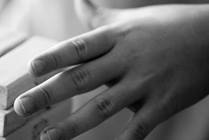
Condition
Chylothorax
When lymphatic fluid (or lymph) collects around the chest wall and lungs, it can cause chest pain or make it hard to breathe. This condition is called chylothorax.

Condition
Allergies to Foods
A food allergy occurs when the body’s immune system overreacts to certain foods. The body then makes antibodies to that food and an allergic reaction occurs. Anaphylaxis is a severe and possibly life-threatening reaction. If a severe reaction occurs, use the EpiPen and call 9-1-1 immediately.

Condition
Sports Medicine: Degenerative Disc Disease
Degenerative disc disease is the slow breakdown of one or more intervertebral discs.
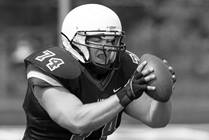
Condition
Spinous Process Apophysitis
Spinous process apophysitis is an injury to an apophysis in the low back.

Condition
Acute Pancreatitis
This Helping Hand™ explains the signs, causes, and treatments for acute pancreatitis—a sudden inflammation of the pancreas—with expert guidance from the care team at Nationwide Children’s Hospital.

Condition
Langerhan Cell Histiocytosis (LCH)
Langerhans Cell Histiocytosis (LCH) is among a rare and diverse group of disorders affecting primarily children. LCH was previously known as Histiocytosis-X, with the terms eosinophilic granuloma, Hand-Schuller-Christian disease, and Letterer-Siwe disease applied to various forms of the disease.

Condition
Pneumomediastinum
In this Helping Hand™, we discuss the causes and treatment pneumomediastinum, which is a condition that happens when air escapes from the lungs, airways, or esophagus into the mediastinum.

Condition
Pelvic Masses
Pelvic masses may be caused by adnexal cysts, ovarian masses and tumors and uterine abnormalities. The most common reason the uterus would become enlarged in a girl or young woman is due to build-up of menstrual blood, also known as an outflow tract obstruction.

Condition
Hypospadias
Many children with hypospadias will have a partially-formed or hooded foreskin with deficient skin on the bottom side of the penis where the urethra is located.

Condition
Liver Failure in Children
Liver failure happens when the liver becomes so sick and damaged that it stops working, either partly or completely. Although this is rare, liver failure can happen even in children. Many of them recover well, but others become extremely ill, and some may need a liver transplant to survive.

Condition
Arthrogryposis
Arthrogryposis, also called arthrogryposis multiplex congenita (AMC), involves a variety of non-progressive conditions that are characterized by multiple joint contractures (stiffness) and involves muscle weakness found throughout the body at birth.

Condition
Dermoid Cyst
Dermoid cysts, also called epidermoid cysts or dermal/epidermal inclusion cysts, are masses in children and adults, most commonly found in the head, face, neck and upper chest. Dermoid cyst ablation is a minimally-invasive procedure that is an alternative to surgically removing the dermoid cyst.
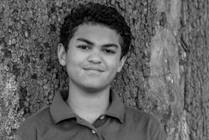
Condition
Inflammatory Bowel Disease
Inflammatory Bowel Disease (IBD) refers to chronic inflammation of the intestines not due to infections or other identifiable causes. There are two main types of IBD: ulcerative colitis and Crohn’s disease. The most common symptoms are diarrhea, sometimes with blood and mucus and abdominal pain.
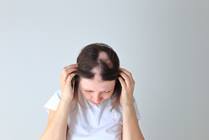
Condition
Alopecia Areata
This Helping Hand is about hair loss related to alopecia areata. It also discusses diagnosis and treatment.

Condition
Food Allergy
A food allergy is when the immune system mistakenly responds to a food protein, resulting in inflammation or damage to the intestinal tract. Allergies can present with an immediate or a delayed reaction.
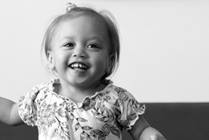
Condition
Gastroesophageal Reflux
Gastroesophageal reflux, also known as chalasia or spitting up, is so common that it should be considered normal for babies. In infants, the sphincter that keeps food in the stomach is not as strong, so some formula or food can come back up. Reflux can cause heartburn which may make the baby fussy.
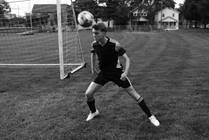
Condition
Hip Flexor Strain
The hip flexor muscles are in the front of the thigh. They are made up of the iliopsoas (i-lee-uh-sow-uhs), sartorius (saar-taw-ree-is), and rectus femoris (rek-tuhs feh-mr-uhs) muscles. They allow the hip to lift up, or flex. Muscle attaches to bone via a tendon.
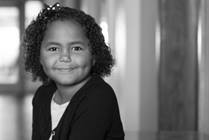
Condition
Intracranial Hypertension (Pseudotumor Cerebri)
Idiopathic intracranial hypertension, sometimes called pseudotumor cerebri, is a condition in which the cerebro-spinal fluid is not able to drain normally.

Condition
Zoonoses
Zoonoses, infections that people can get from animals. Children with compromised immune systems are at higher risk for these infections. The information in this Helping Hand™ will help with safe animal and pet care.

Condition
Back Sciatica
The sciatic nerve is the longest nerve in the body. Sciatica is caused by increased pressure placed on the sciatic nerve, most commonly from a herniated disk.
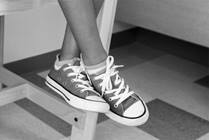
Condition
Folliculitis
Folliculitis is a common inflammation of the hair follicles, which are the openings in the skin where the hair grows. The rash appears as small red bumps or pus bumps that can itch or be mildly painful.

Condition
Unicameral Bone Cyst
Although unicameral bone cysts are benign, active unicameral bone cysts can cause bones to weaken or fracture.
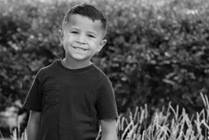
Condition
Nasal Congestion
Nasal congestion, nasal obstruction, and mouth breathing are all descriptions of a similar condition where the nasal passages are blocked, resulting in the sensation of difficulty breathing through the nose.

Condition
Enlarged Adenoid
The adenoid is a structure located at the junction of the nose and throat (nasopharynx) that functions in the immune system. Adenoids sometimes become enlarged during childhood and the increased size may cause problems.
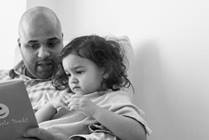
Condition
Heart Failure
Heart failure means the heart’s ability to squeeze is weakened. As a result, the heart cannot pump enough oxygen and nutrients to meet the body’s needs.
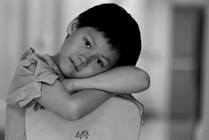
Condition
Hirschsprung Disease
Hirschsprung disease, also known as megacolon, is a congenital condition that causes blockage of the intestine. The blockage is caused by a lack of nerves in the bottom segment of the colon. Children with Hirschsprung disease will need surgery to remove the non-functional segment of the intestine.

Condition
Coarctation of the Aorta
Coarctation of the aorta is a heart defect that is present at birth (congenital) in which the aorta is narrowed and results in decreased blood flow to the lower body. The left ventricle (pumping chamber) of the heart must work harder in order to pump blood through the narrowed aorta.
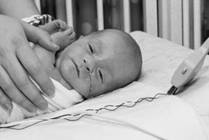
Condition
Ebstein's Anomaly
Ebstein’s anomaly is a heart problem that some people are born with. It means the tricuspid valve, which helps control blood flow in the heart, doesn’t work right. Most babies with severe Ebstein’s need surgery at some point.

Condition
Total Anomalous Pulmonary Venous Return (TAPVR)
Total anomalous pulmonary venous return (TAPVR) is a condition where the blood vessels in the lungs, called the pulmonary veins, are not attached to the heart in the right place. Because of this, the body can’t get enough oxygen.
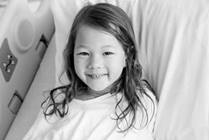
Condition
Interrupted Aortic Arch (IAA)
Interrupted aortic arch is a heart condition where the aorta doesn't form completely. This affects blood flow and will require open heart surgery to treat it.
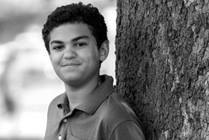
Condition
Truncus Arteriosus
Truncus arteriosus is a rare heart defect where only one large blood vessel forms instead of two. It can be treated with surgery.

Condition
Low-Grade Gliomas
Low-grade gliomas are a type of brain tumor that grow slowly and are less aggressive than high-grade gliomas. They can cause seizures, headaches, and other symptoms. Treatment options include surgery, radiation therapy, and chemotherapy.

Condition
Medulloblastoma
Medulloblastomas are tumors that develop in the brain, most commonly in a region called the cerebellum. The cerebellum is located next to the brainstem and controls coordination, balance and other motor skills.
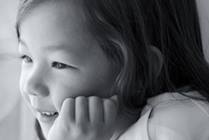
Condition
Diffuse Midline Glioma (DMG)
Diffuse midline glioma (DMG) is a rare, fast-growing tumor of the central nervous system that can occur in the brain or spinal cord. It affects up to 300 children annually. Most cases have no known cause and result from genetic changes that happen by chance.

Condition
Clubfoot (Talipes Equinovarus)
Clubfoot, also known as talipes equinovarus (TEV), is a common foot abnormality, in which the foot points downward and inward. It occurs twice as often in males than in females. Signs of clubfoot include a short and/or tight Achilles tendon (heel cord) and a heel that is turned in.
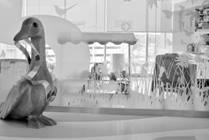
Condition
Duodenal Atresia
Duodenal atresia is a congenital condition where the duodenum is narrowed or blocked. The duodenum is the first part of the small bowel (intestine). This blockage keeps liquids and food from passing through the stomach into the rest of the intestine. The cause of duodenal atresia is not known.
Condition
Eczema
Eczema is a chronic dry, itchy skin condition that often runs in families. Eczema is not contagious. Eczema often affects the insides of elbows, backs of knees, and the face.

Condition
Thrush and Yeast Infections
Thrush is an infection caused by a fungus called candida. Thrush can affect a child's mouth or diaper area. Oral thrush begins as flat white spots and come together to form patches. These spots are often mistaken for "milk patches." Candida in the diaper area can cause a red rash with tiny blisters.
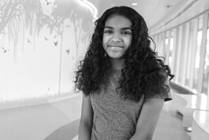
Condition
Congenital Melanocytic Nevi (CMN)
Moles present from birth, or that develop within the first few months after birth, are called congenital melanocytic nevi (CMN). They are fairly common and, in most cases, they do not cause health problems. However, they can carry risks.

Condition
Asperger's Syndrome
Asperger’s Syndrome, a form of Autism Spectrum Disorder, is a developmental disorder. Young people with Asperger’s Syndrome have a difficult time relating to others socially and their behavior and thinking patterns can be rigid and repetitive. They also may have trouble understanding body language.
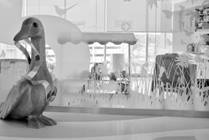
Condition
Gastroschisis
When the muscles and skin fail to form normally in the abdominal wall, this results in an abdominal wall defect. Gastroschisis is the most common of the abdominal wall defects. Babies born with gastroschisis have a hole in the abdominal wall.
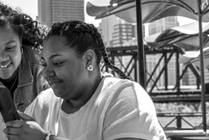
Condition
Premenstrual Syndrome (PMS)
Premenstrual syndrome (PMS) is a collection of behavioral and physical signs and symptoms that affects women a few days before their menses. These symptoms typically occur in a predictable pattern. Symptoms can include mood swings, anxiety, food cravings, bloating, fatigue and headaches.
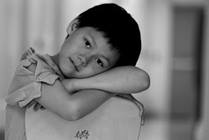
Condition
Atrial Septal Defect
Atrial septal defects (ASD) are a congenital heart defect characterized by a hole in the wall (septum) that divides the upper chambers (atria) of the heart.

Condition
Bladder Outlet Obstruction
Bladder outlet obstruction, also known as lower urinary tract obstruction (LUTO), is a rare birth defect characterized by a partial or complete blockage in the urethra. There are several types of bladder outlet obstruction, including urethral atresia, posterior urethral valves, and triad syndrome.

Condition
Birthmarks
More than 80 percent of babies have some type of birthmark. Most birthmarks are harmless and require no treatment. Vascular birthmarks include macular stains, hemangiomas and port wine stains. Pigmented birthmarks include congenital melanocytic nevi (moles), dermal melanosis and café-au-lait spots.

Condition
Anorexia Nervosa
Anorexia nervosa is a type of eating disorder in which a person severely limits the amount of food he or she eats to prevent weight gain or lose weight.
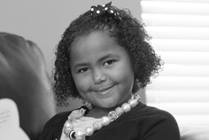
Condition
Submucous Cleft Palate
A submucous cleft palate (SMCP) results from a lack of normal fusion of the muscles within the soft palate as the baby is developing in utero. Frequent middle ear infections, nasal speech and early feeding difficulties may be the first indicators that a child has a submucous cleft palate.

Condition
Keratosis Pilaris
Keratosis pilaris is a dry skin type. It looks like dry, rough, small bumps that are flesh-colored or pink and can feel like sandpaper or chicken skin. It is not contagious and is usually not itchy. The most common areas for these bumps are on the back of the arms, front of the thighs and the face.

Condition
Ovarian Masses and Tumors
Ovaries can become enlarged due to cysts, masses or neoplasms. The vast majority of ovarian neoplasms in girls and young women are not cancerous. Most ovarian cysts do not cause significant symptoms and resolve spontaneously.
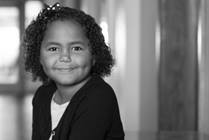
Condition
Nosebleeds (Epistaxis)
Nosebleeds, also called epistaxis, commonly occur in children for a number of reasons.
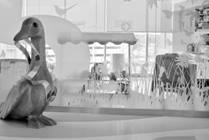
Condition
Congenital Diaphragmatic Hernia
Congenital diaphragmatic hernia (CDH), is a rare congenital condition where the muscles in the diaphragm do not grow together, leaving a hole. The hole allows the intestines and other organs (stomach, liver) to move up into the baby’s chest. When this happens, it makes it hard for the lungs to grow.

Condition
Astrocytoma (aka Glioma)
Astrocytoma is a type of tumor that can grow in the brain or spinal cord. It can be treated with surgery, radiation therapy, or other treatments depending on the type of tumor.

Condition
Giant Neck Mass
A giant neck mass is an abnormal growth of the neck. There are two different types of masses including cervical teratomas and lymphatic malformations. The cause of it is unknown, but it can be treated.
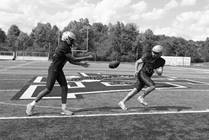
Condition
Sports Hernia
A sports hernia is a soft tissue injury in the groin area. It often occurs during sports that require repeated kicking or quick change of direction.

Condition
Molluscum Contagiosum
Molluscum contagiosum is a viral skin infection that causes pinpoint lesions on the skin. Molluscum contagiosum is part of the pox virus family. This virus is spread through direct skin-to-skin contact.
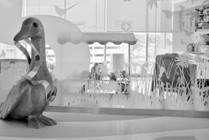
Condition
Congenital Lung Lesions
Congenital lung lesions are a group of conditions where part of the lung has an abnormal growth or mass. Congenital pulmonary airway malformation (CPAM), bronchopulmonary sequestration and congenital lobar emphysema are the most common types of congenital lung lesions.
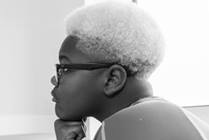
Condition
Irritable Bowel Syndrome
This Helping Hand™ covers irritable bowel syndrome (IBS) which is a common disorder that affects the large intestine (colon). Symptoms are caused by changes in how the GI tract works. IBS is a group of symptoms that occur together, not a disease.
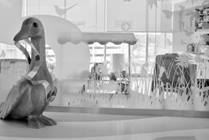
Condition
Cradle Cap
Seborrheic dermatitis, also known as cradle cap, is very common in infants and children. It appears as scaly, itchy, white, yellow or red patches. It most often appears on the scalp but can also be found on the face, ears, or in body folds such as under the arms and behind the knees.

Condition
Ectopic Ureterocele
An ectopic ureterocele is when there is an abnormality in the renal system, usually with an extra tube that drains pee (urine) into the wrong place.
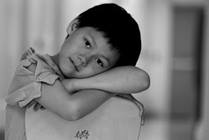
Condition
Thyroglossal Duct Cyst
A thyroglossal duct cyst is typically noticed as an area of fullness or a lump in the midline of the neck, usually just above the voice box.

Condition
Graves' Disease
This Helping Hand™ explains the causes, signs and symptoms, and treatment for Graves' disease.

Condition
Osteosarcoma
Osteosarcoma is the most common form of bone cancer in young people under age 20. Tumors are lumps or masses and usually affects the long bones near the knee or the shoulder.
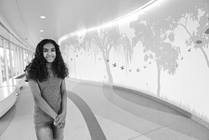
Condition
Acanthosis Nigricans
This Helping Hand™ discusses acanthosis nigricans (AN), which is a dark patch that appears on a child's neck, armpit, under the breast or a skin crease. It is usually a sign that the body is making extra insulin that it cannot use well.
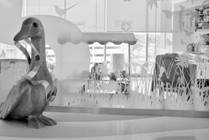
Condition
Pierre Robin Sequence
Pierre Robin Sequence is a condition that affects a baby’s mouth. It usually involves a cleft palate and a small lower jaw. This can impact breathing and feeding.

Condition
Vaginal Stenosis
Vaginal stenosis is a condition where the vagina becomes narrower and shorter. It can make it hurt to have sex or use tampons.
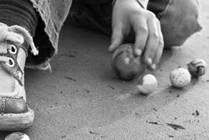
Condition
Gynecomastia
Gynecomastia refers to enlarged breasts in males. This condition is common in teenagers and often resolves on its own. However, if it persists for longer than 12 months, it may benefit from breast surgery.
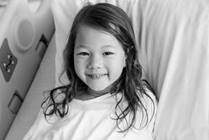
Condition
Double Outlet Right Ventricle (DORV)
Double outlet right ventricle (DORV) is a congenital heart defect where the two great arteries are both attached to the right ventricle. In DORV, the normally separated oxygen-rich arterial blood and oxygen-poor venous blood is mixed prior to leaving the heart.
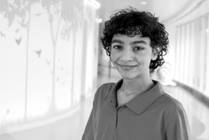
Condition
Aneurysmal Bone Cyst
Aneurysmal bone cysts (ABCs) occur more commonly in teens. The cysts are hollow and filled with blood. The tumors are not cancerous, but they damage bone and can affect surrounding tissue.
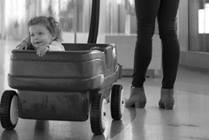
Condition
Neuromuscular Disorders
Patients benefit from coordinated care from specialists, all with expertise in pediatric neuromuscular disorders.
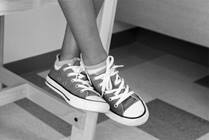
Condition
Stress Fracture
A fracture is a broken bone. A stress fracture is a complete or incomplete break in a bone. It is caused by repetitive activity.




